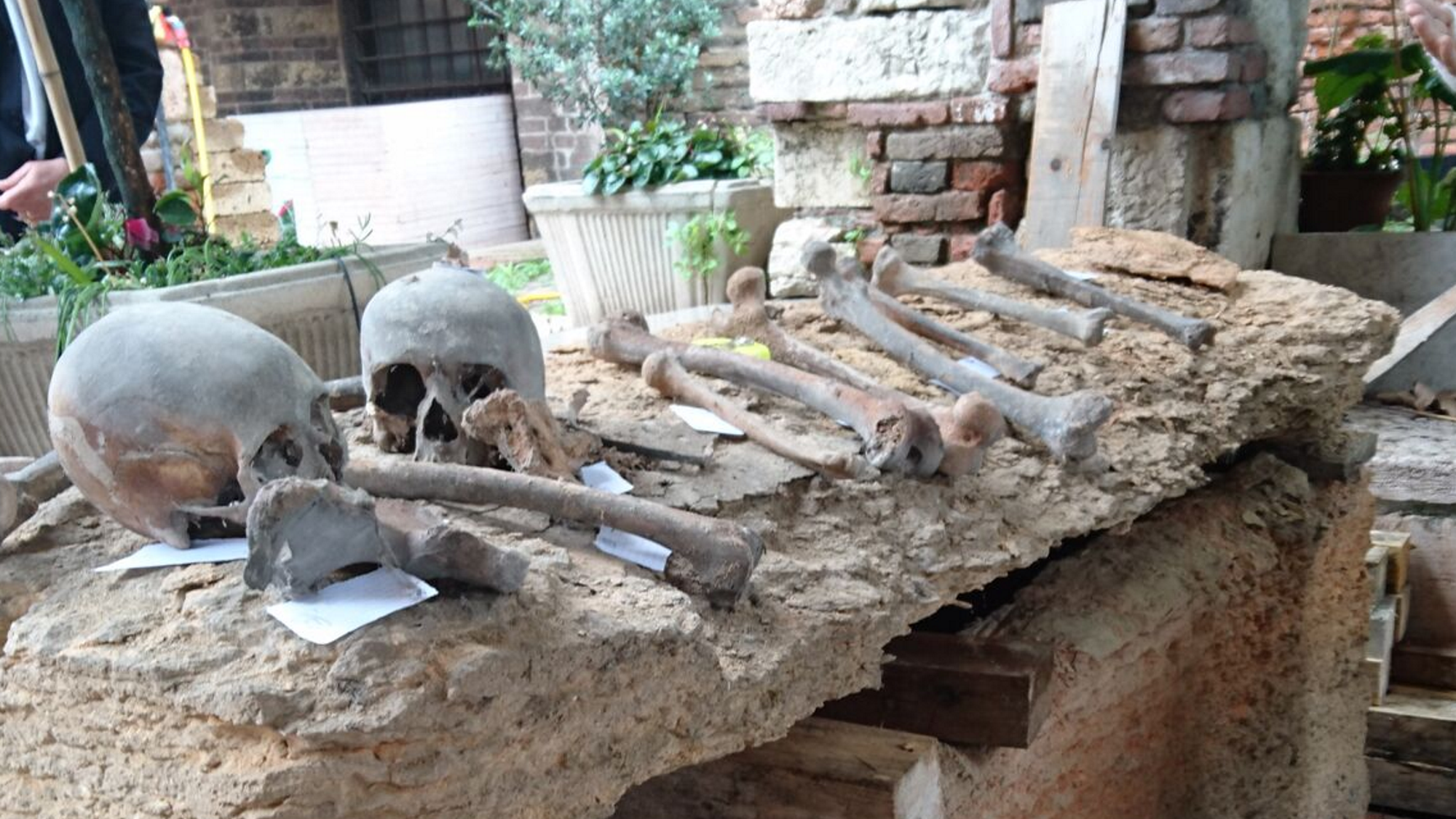This picture shows the sarcophagus found in 2016 in the Church of San Fermo Maggiore in Verona, in the wake of restoration work. Inside were the possible remains of Arnau de Torroja, a Catalan nobleman and the ninth Grand Master of the Order of the Temple, who travelled to the Holy Land, and died suddenly on the return journey to Verona, in 1184.
The Italian researchers who opened the sarcophagus carbon dated the remains, revealing that they were from between 1020 and 1220. They also took a sample of a tooth that was sent to Harvard for genetic analysis. Over half a million informative positions from the nuclear genome were genotyped, and the remains were confirmed as that of a man.
Later, Carles Lalueza-Fox’s team at the Institute for Evolutionary Biology (IBE: CSIC-UPF) in Barcelona, carried out a population genetics analysis, comparing the sample with those of modern-day Iberians, Italians, and French. According to Lalueza-Fox, although the genetic material is very close to today’s Catalans, “the results are not conclusive, because we do not know what Catalans were like a thousand years ago”. The identification will only be unequivocal after a comparative analysis is run with the remains of his brother, Guillem de Torroja, who is buried in Tarragona cathedral.
Would you like to see your photo here? Please send us pictures related to science or the PRBB to ellipse@prbb.org.






